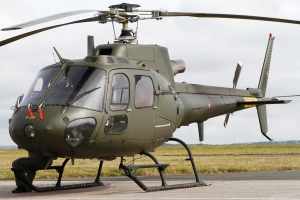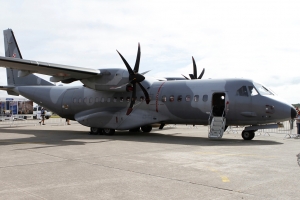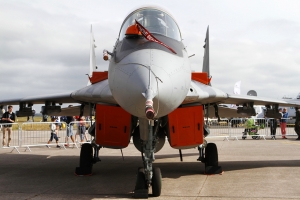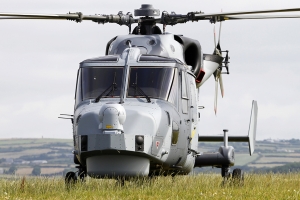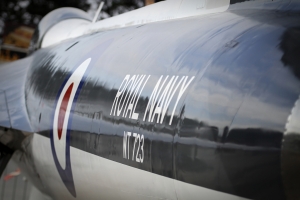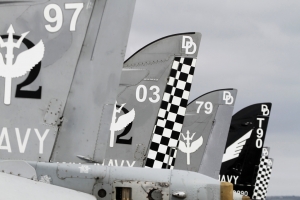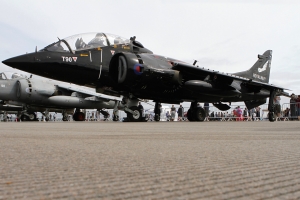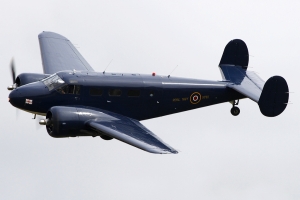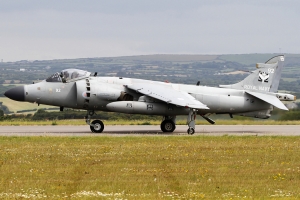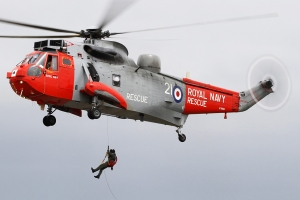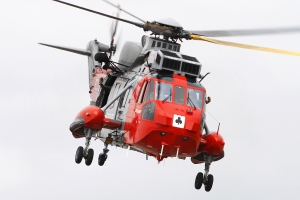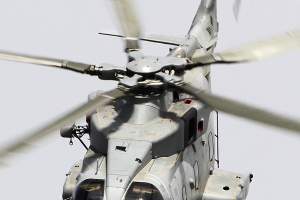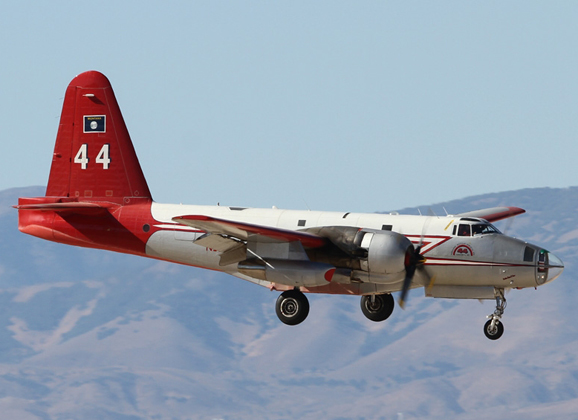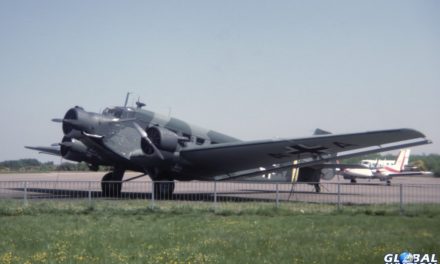In a busy week for the Royal Navy, the second of its two annual airshows took place at RNAS Culdrose. Shaun Schofield headed down to deepest Cornwall to see what the show had to offer.
Sadly, there is only one place to start with this review: the unfortunate incident involving the Royal Navy Historic Flight Sea Fury T20. With Lt Cdr Chris Götke at the controls, as ever, the Fury was put through its paces in a master class of heavy piston fighter display flying, effortlessly eating up the sky with huge, powerful loops and half Cubans. Towards the end of the display, all changed as a huge plume of smoke poured from the Centaurus engine. Clearly, all was not well, and an emergency was declared instantly.

Lt Cdr Chris Götke powers into the air in his favourite mount © Shaun Schofield – www.globalaviationresource.com
‘Goaty’ brought the Fury around, dropping the gear as late as possible, so as to make it back to the runway. Sadly, the gear failed to lock in time and the aircraft collapsed, veering off the runway and skidding to a halt on its belly. It was a nerve-racking incident to experience, but relief swept through the onlooking crowd as Chris immediately jumped out of the cockpit, completely unharmed, before spontaneous applause rippled through the audience to honour the man’s supreme airmanship in avoiding a far more serious incident; it can be no mean feat getting a Fury down safely with no power.
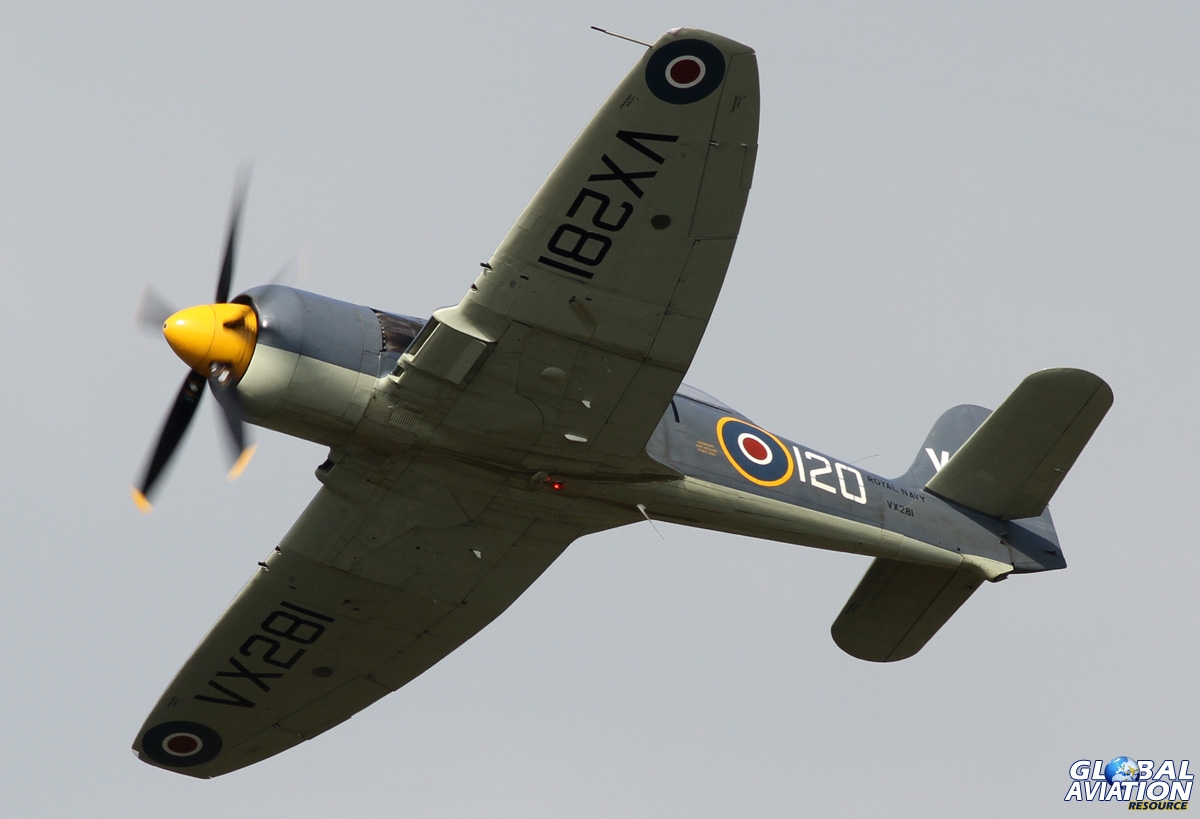
‘Goaty’ put on a tremendous show as ever in the mighty Sea Fury © Kevin Wills – www.globalaviationresource.com
Chris’ well-being was obviously the main priority in the aftermath, but it was with great sadness to see the Fury sat looking forlorn on the grass, surrounded by firemen and their appliances. The RNHF has had a shocking run of luck this season with aircraft serviceability, so to lose the one currently airworthy aircraft in this fashion is a real blow for them. We can only hope the damage isn’t as serious as it potentially looks and that the Fury can once again grace the skies in the not too distant future.

Fingers crossed this wonderful machine will soon be where it belongs once more © Shaun Schofield – www.globalaviationresource.com
The incident marred what had otherwise been a terrific day’s flying in uncharacteristically excellent weather. Culdrose’s geography makes it prone to awful weather (I’ve sat through more grey/wet/foggy shows than I care to remember!), and with a questionable forecast, it seemed a typically damp show was on the cards. Fortunately, it was not to be, with broken cloud and sunshine prevailing throughout the show. Quite remarkable really, but when the weather does play ball, Culdrose has to be one of the finest airshow venues in the country, with the sun behind all day, a real sense of close proximity to the displaying aircraft and the rolling hills of the Cornish countryside providing a picturesque backdrop.

Peter Teichman gets airborne in front of a stunning backdrop © Shaun Schofield – www.globalaviationresource.com
On the ground, there was a small static park, made up predominantly of the types based at Culdrose, alongside a smattering of RAF and civilian types, including a host of Sea Harriers, a 736 NAS Hawk in its very smart new markings and the stunning Hunter PR11 in its 764 NAS livery. A Danish Fennec was a nice and unusual type to see, but the stars of the static had to be the Polish MiG-29UB and its supporting Casa 295. Ian Harding spoke briefly with the two pilots about their participation at the Air Day.

The MiG crew, Captain “WIONA” and Second Lieutenant “PINEK” © Ian Harding – www.globalaviationresource.com
Making the trip were Captain Mariusz Wiaczkowski “WIONA” and Second Lieutenant Rafal Pinkowski “PINEK”. WIONA has around 21 years fast jet experience, including six years flying MiG-21 and PINEK has been flying fast jets for approximately eight years.
The aircraft arrived on 30 July and departed on 1 August. Their departure was quite an experience with much of the runway out of action in order to protect the area of the runway where the Sea Fury came to rest the day before. Having considered the short take off capabilities of the aircraft, the two crew positioned the MiG-29 well away from the incident and with full reheat, “launched” the aircraft into Cornish airspace in a distance estimated around 2,000 feet. Very impressive!

It’s great to see Culdrose attracting this type of aircraft © Shaun Schofield – www.globalaviationresource.com
PINEK commented: “We are very pleased to attend the Culdrose Air Show for the first time. For us, it is a very good trip which we do not have the opportunity to do very often. In fact this trip is the first time we have flown so far away from our home base. Our Casa 295 provided our support which included a re-fueling stop at Leeuwarden Air Base in Holland. Unfortunately we did not have the capability to fly direct.Our flight from Malbork to Leeuwarden took approximately one hour ten minutes with the second leg to Culdrose taking approximately the same time. Our route down took us over London which was a great sight for us. On this occasion we can only perform static duties but perhaps in the future at another Culdrose Air day, if invited, we will be able to fly”. Sounds like a great idea to us!

The supporting Casa 295 departs for home © Ian Harding – www.globalaviationresource.com
In terms of Polish Air Force MiG-29 inventory, the crew confirmed these are split equally between the two operational units based at Malbork and Minsk Mazowiecki with 16 aircraft currently active from each.Both bases maintain QRA on a rotational basis with each unit on QRA (Quick Reaction Alert) for approximately two to three weeks at a time. The crew confirmed that flying activity from both bases is very high at this time reinforced by NATO fast jet forces who were supporting them in NATO`s Air Policing Mission over the Baltics. Specific operational details were not available but the crew were able to confirm that a detachment of four French Air Force Rafale from Saint Dizier Air Base arrived at the end of April 2014 and were followed by four Mirage 2000-5F at the start of June. They will be replaced by F-16s from the Netherlands at the end of September.
In a fitting conclusion to their attendance, RNAS Culdrose confirmed that the crew of the Polish Air Force MiG-29 had been awarded “Best Static Display”.

Star of the static, the mighty MiG-29 © Shaun Schofield – www.globalaviationresource.com
Culdrose is home to the Royal Navy School of Flight Deck Operations, which trains students in the art of aircraft handling. To assist, the base features a dummy aircraft carrier deck, with a variety of aircraft types for students to move around. Among these types are a whole host of the aforementioned Sea Harriers, many of which are retained in working condition, albeit under a limited-throttle setting.

No less than seven Harriers were present in the static park © Shaun Schofield – www.globalaviationresource.com
For the first time at an air day, three of these Harriers – two FA2s and a T8 – were taxied along the runway, with one of the single seaters returning for a brief demonstration of aircraft handling. Seeing Harriers operate under their own power and hearing that famous Pegasus whine for the first time in nearly four years was a real treat and proved very popular with the crowd. Let’s hope this becomes a firm feature of future air days.

One of the season highlights, witnessing running Sea Harriers once more © Shaun Schofield – www.globalaviationresource.com
The Harrier demonstration took place during the short morning section of flying before the airshow proper, which also included Rich Goodwin’s ‘Muscle Biplane’ (a Pitts S2S), opening the show in a frankly outrageous demonstration of high-energy aerobatics. Rich has certainly been getting about this year, receiving plenty of much deserved praise along the way. It was a stark contrast to the subsequent act, the beautiful Beech 18 in its Admiral’s Barge colours, flown with plenty of grace befitting the type by Andy Foan, whilst closing the first stint of flying was a classic search and rescue demonstration by the locally-based Sea King HU5 of 771 NAS.

A standard attitude for Rich Goodwin! © Shaun Schofield – www.globalaviationresource.com
Naturally, the Sea King was one of several Fleet Air Arm types on show, with the honour of opening the main display given to the solo Merlin HM2. The aircraft has suffered serviceability issues at every show it’s attended this month, so it was pleasing to see it have a trouble-free show, and present the locals with a chance to see this familiar aircraft flown in a less than familiar fashion, featuring some very sporty wing and nose overs. More Merlins and Sea Kings, including an ASaC7 of 849 NAS took to the air late in the day for the traditional Culdrose Balbo, sadly curtailed due to the Sea Fury incident, although the crowd were able to see the aircraft recover.

The Merlin HM2 is an impressive machine © Shaun Schofield – www.globalaviationresource.com
Making its first public appearance in the flying display at an air day was Culdrose’s latest resident, the Avenger T1. Whilst its appearance was rather brief, consisting of a couple of missed approaches before landing, it was nice to see one in the air nevertheless. RNAS Yeovilton was also represented in the flying display by the Black Cats, displaying its pairs routine of Wildcat and Lynx.
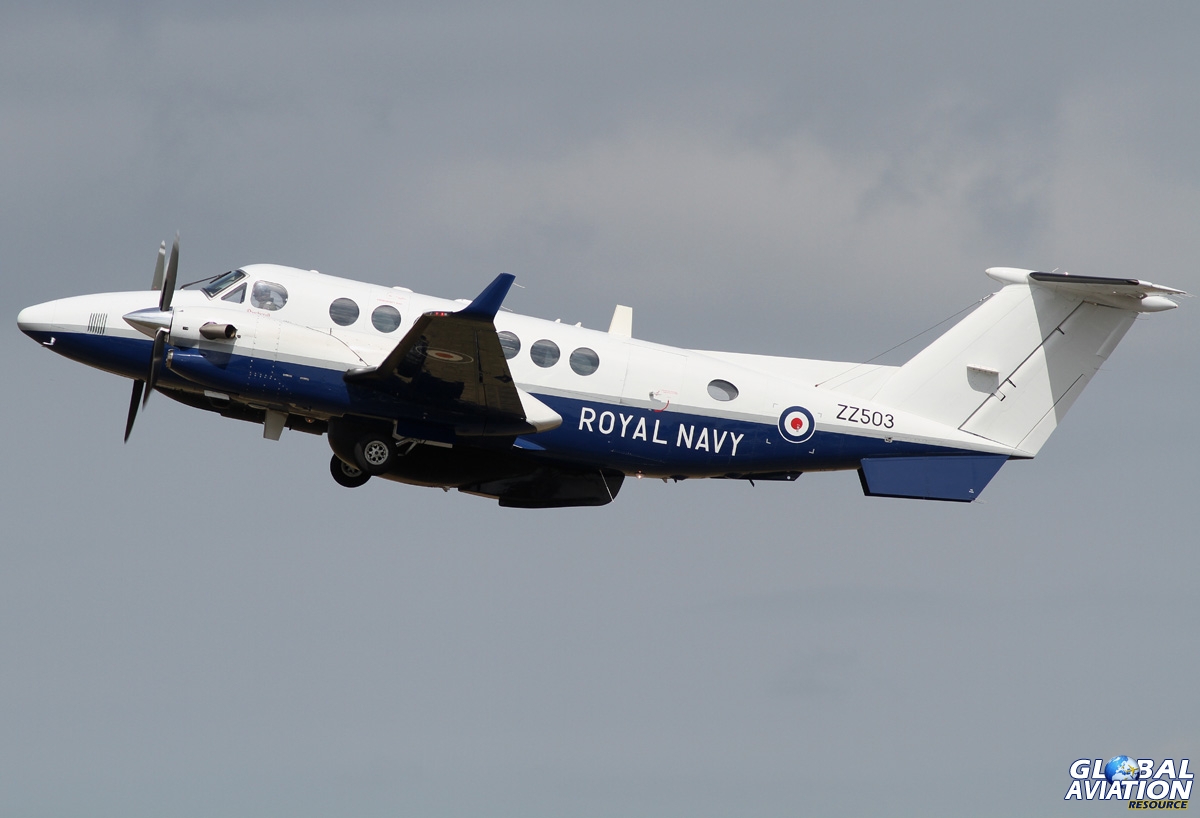
One of Culdrose’s four newest resident aircraft © Tom Wills – www.globalaviationresource.com
Further military participation was provided by the Army and Royal Air Force, courtesy of a Lynx AH7 and Hercules respectively. The Lynx has been winning awards wherever it’s gone this year, and it’s easy to see why, with a quite superb demonstration of helicopter aerobatics; the crew of WO1 Mick Kildea and Capt Neill Posthumus are certainly giving the Lynx display a fabulous send off. Fully expecting a simple flypast from the Hercules, it was great to see it drop in for a quick tactical landing. It’s been many years since we‘ve seen a RAF Herc display at a show, and whilst this was far from a display, it presented a welcome but all too rare chance to see this workhorse up close.

Great to see the RAF pop in for a quick stop © Kevin Wills – www.globalaviationresource.com
In recent years, with a steady decline of military displays on offer, Culdrose has taken on a slightly alternative direction, with plenty of focus on classic jets and warbirds. Both were well represented in this year’s show, headlined by the Midair Squadron, performing as a trio for the first time, with Graham Peacock’s beautiful Hunter T7 joining the Kemble-based pair. Hearing four Avons together was a real joy for the senses as the threesome performed a series of graceful passes in a number of formations, before breaking into their individual routines of Hunter pair and Canberra solo. We’ve waxed lyrical over how enjoyable the Midair Squadron has been this season in every review they’ve featured, but needless to say, they were terrific once again.
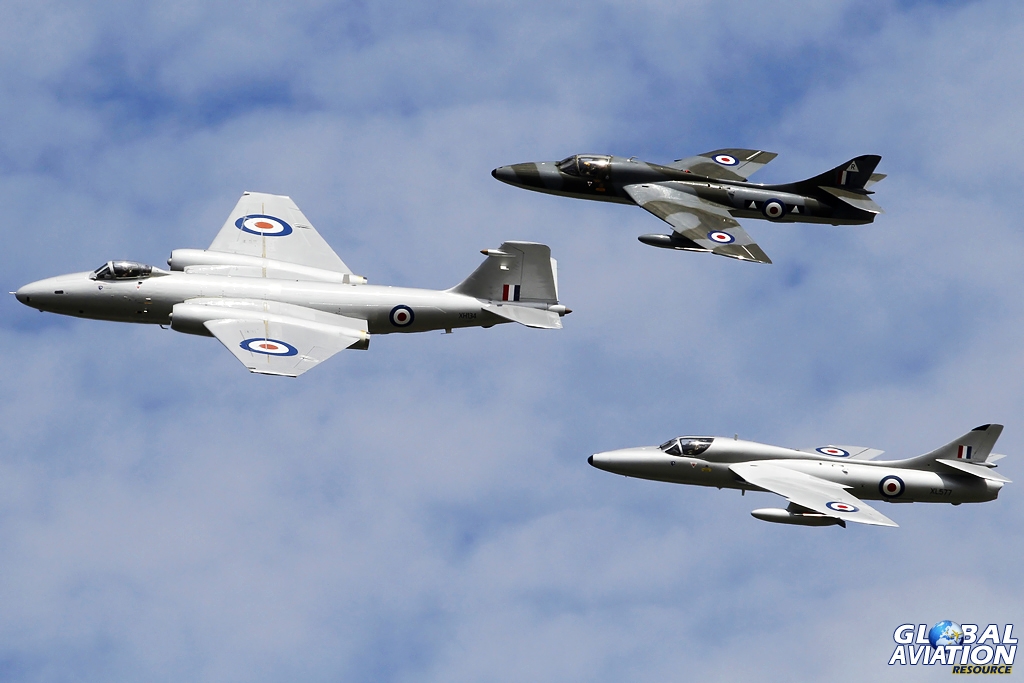
The golden age of British aviation lives on with the Midair Squadron © Shaun Schofield – www.globalaviationresource.com
Further classic jet action was on offer courtesy of XH558, with Martin Withers at the helm in what was a punchy display, featuring some very close turns, particularly the bomb bay pass. Having had a relatively quiet season compared to last year, the Classic Air Force also dropped in, displaying the Meteor T7 and Vampire, whilst the Meteor NF11 took its place in the static display. Evoking memories of the old Vintage Pair, the two performed a series of passes as a pair, before breaking into their all-too-short solo routines, consisting of a handful of alternative passes.

A crowd puller wherever she goes © Kevin Wills – www.globalaviationresource.com
Peter Teichman has been a staunch supporter of the show in recent years, returning once again in his P-51D Mustang ‘Jumpin Jacques’ with a typically smooth and flowing routine. Making the long trip down from Kent were the Biggin Hill Heritage Hangar Spitfire Mk IX and Hurricane I. After some loose formation passes, Clive Denney led the Hurricane through a gentle routine, the Merlin engine purring beautifully as it went, before Dan Griffith was let loose in MK912.
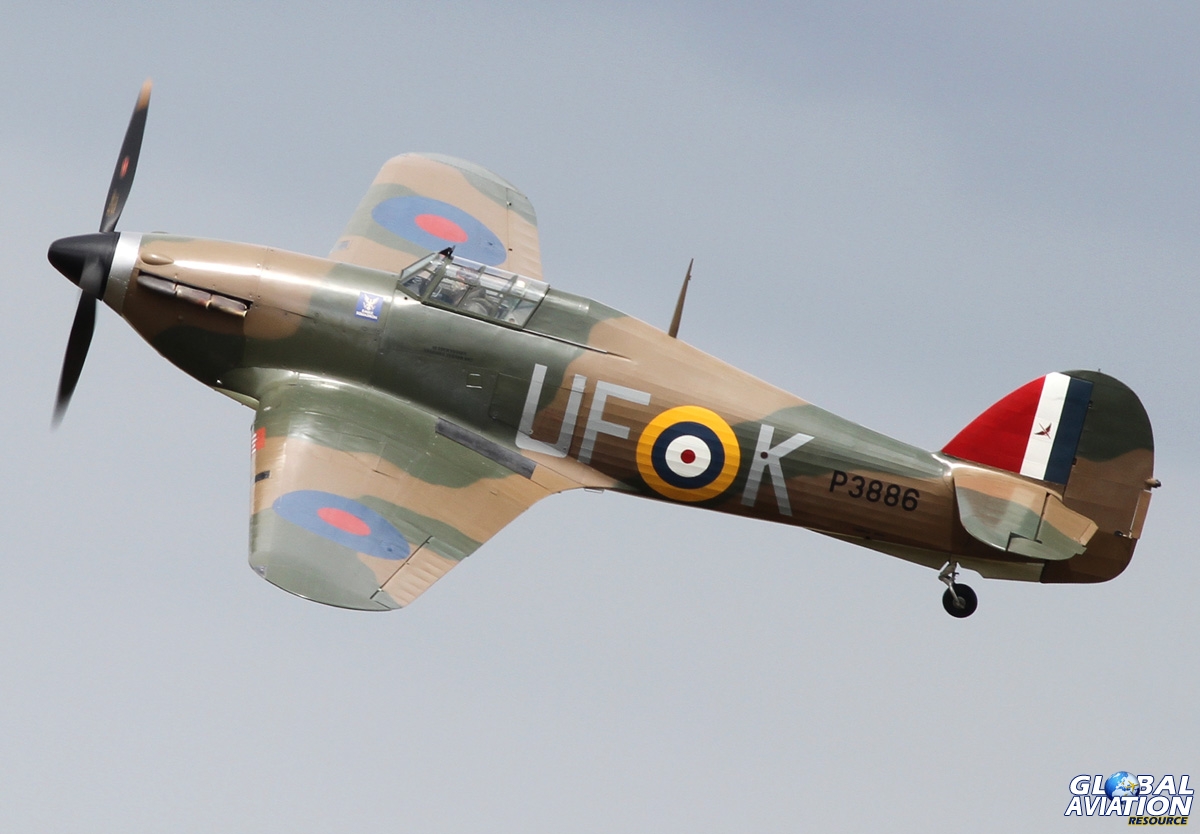
Clive Denney had the Hurricane purring © Kevin Wills – www.globalaviationresource.com
It’s a real shame Dan doesn’t perform his solo routine more often, as it is comfortably the best Spitfire display I’ve had the privilege to see. He flew the aircraft as if he had stolen it, keeping the aircraft in close proximity to the crowd at all times with a plethora of tight turns and low passes. Truly a textbook demonstration of warbird flying.

If Carlsberg did Spitfire displays… © Shaun Schofield – www.globalaviationresource.com
American heritage was represented further courtesy of the Dutch Historic Flight’s B-25, continuing its UK tour and flown in a rather spirited manner containing numerous fast passes and large wing-overs, all the while sounding terrific as its engines clattered along. With Kennet’s Skyraider still plagued by the technical issues that prevented it from displaying at Yeovilton, its T-6 Texan was once again drafted in as a replacement, this time with Dave Mackay’s capable hands at the controls.
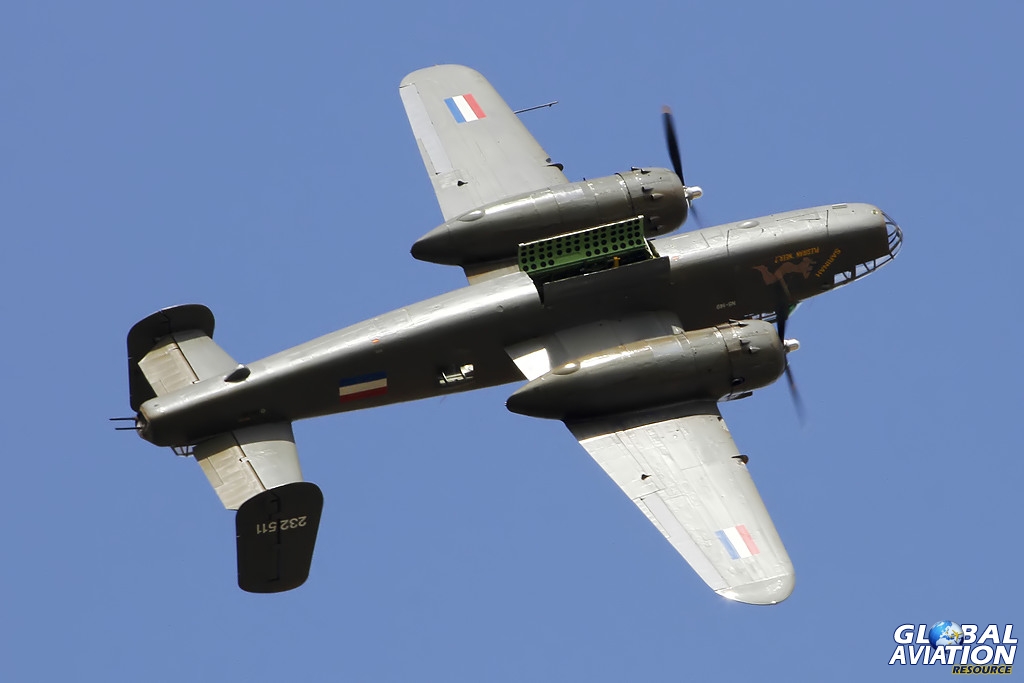
The Dutch know how to display a bomber and no mistake! © Shaun Schofield – www.globalaviationresource.com
Further variety to the flying programme was provided by a number of civilian aerobatic teams. The Blades and the RV8tors are regular attendees at Culdrose, returning once again to present their typically polished routines, the former with their flamboyant, high-energy display and the latter demonstrating the fine art of two ship formation flying.
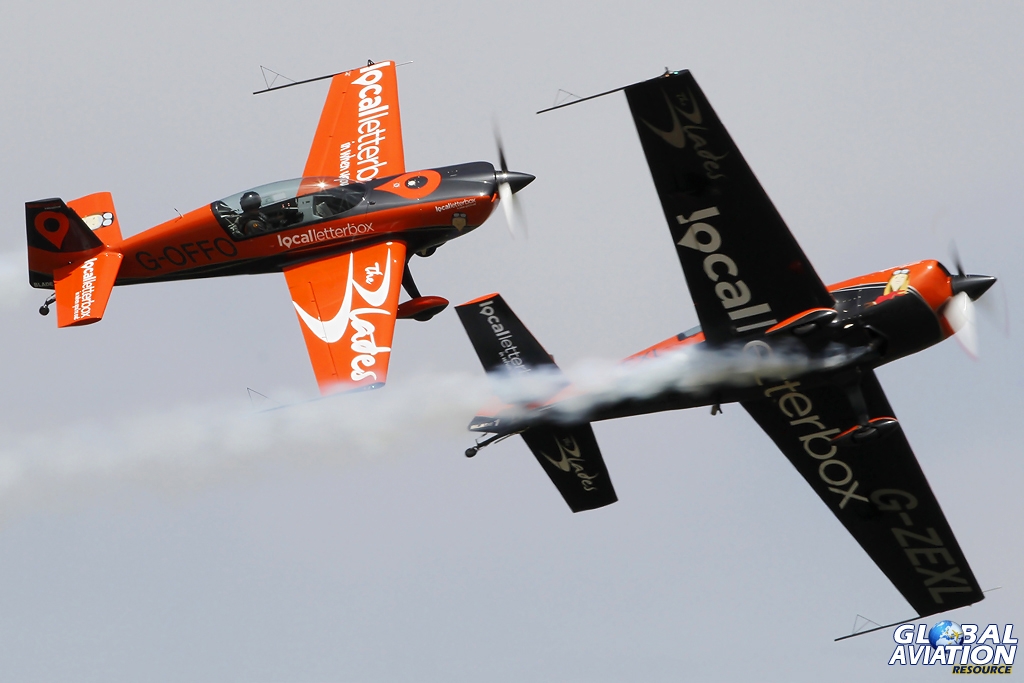
Culdrose is the perfect venue to enjoy teams such as the Blades © Shaun Schofield – www.globalaviationresource.com
Bringing their unique blend of barnstorming flying were the Breitling Wingwalkers, whilst making their Culdrose début, were Wildcat aerobatics, flying a mixed formation of a pair of Pitts Specials and a Single Edge 540. In truth, the display wasn’t quite as polished as the other teams, but for a relatively new team on the circuit, they’ll no doubt improve with experience.

Crossover! © Shaun Schofield – www.globalaviationresource.com
Once again, Culdrose has offered a full and varied flying programme, with something for just about everyone. Hopefully the Sea Fury incident won’t detract from the fact the organisers put on a thoroughly enjoyable afternoon of flying.




